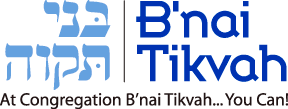On Israel Independence Day, Yom Haatzmaut, Conservative Jews add a special prayer to the Amidah. It is an Al hanisim prayer: “We thank you for the miracles and the deliverance and the heroism and the redemptions and the wars which You conducted for our ancestors in other days and in our time…” The traditional prayers of this sort are for Purim and Chanukah, but the Conservative movement saw fit to add one more to celebrate the rebirth of Israel.
The text in our current prayer books surveys the history of the birth of Israel: the Zionist movement’s successful but fledgling efforts; the tragic closing of the gates of Palestine by the British just when we were fleeing from the Nazis; the opposition from the Arabs within Israel as well as the genocidal attacks from surrounding Arab nations. It then thanks G-d for giving us courage, opening the gates to immigrants, and freeing the land of invaders.
There is an interesting history to the development of this blessing. An earlier Conservative version put much more emphasis on the Holocaust, and the tragic irony that the safe refuge of Israel was only established after the catastrophe was over. This serves to underscore the necessity of the recently established Israel as a protected haven for desperate Jews.
An even earlier version, which has been adopted by a few of the modern Orthodox in Israel, emphasizes the perfidy of the British, who betrayed their mandate and blocked Jewish immigration instead of facilitating it. As a consequence, Israel at its founding was outmanned and outgunned, with huge causalities as a result.
What follows in all three of these versions is the “standard” al hanisim praise of G-d, “who delivered the many into the hands of the few, the wicked into the hands of the righteous, etc.”
The existence of these different versions, each with a different perspective on what exactly the miracle of Israel is, highlights a tension built into any attempt to create contemporary liturgy. On the one hand, we want our liturgy to reflect recent events; on the other hand, the true meaning and significance, or even relevance, of those events may not yet be clear—in fact, may not be clear for decades or centuries.
Thus one can understand why our siddur is a remarkable combination of 3000 year old psalms and poetry, 2000 year old rabbinic prayers, 1000 year old martyrologies, and contemporary meditations on the Shoah and Israeli Independence Day. The siddur is the place where the past and the present help us shape the future.
